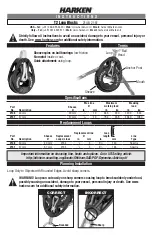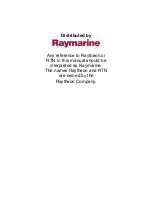
VAG Operation and Maintenance Instructions • 6
on the part of the manufacturer for a pressure test in this position.
For test pressures higher than the approved nominal pressure the
hydrant must be disassembled and the flange blanked using a
blind flange.
Newly installed pipeline systems should first be carefully flushed
to remove all foreign matter. Should any residue or impurities ex-
ist in the pipeline they may clog the internals during the flushing
process. This may impact the tightness function of the fitting or
damage the lining of the shut-off cone.
In particular, after repairs are carried out, but before putting new
systems into operation, the pipeline system must be flushed again
with a fully opened valve. Any cleaning or disinfecting agents used
may not corrode the fitting materials. The fitting is normally closed
by being turned in clockwise direction.
5.3 Initial operation
VAG HYDRUS
®
G Underground Hydrants are delivered in the fol-
lowing versions:
• Claw DN 100 with self-closing claw cover (2)
• Claw DN 80 with self-closing claw cover (2)
Select the standpipe according to the claw version.
• Lift up self-closing outlet claw cover (2) (Wire with bent hook),
• Attach and tighten standpipe. Check that the base pins are
properly seated in the claw (1.1) by shaking the standpipe.
• Fill the piping section. In doing so the underground hydrant can
be used to release air and be flushed afterwards.
Caution!! The hydrant shut-off valve must always be
completely open. Throttling of the flow may only take
place via the valves on the standpipe.
Throttling the hydrant shut-off valve may result in high flow veloci-
ties occurring within the valve.
5.4 Operation
5.4.1 Opening the hydrant
Lift street cap cover at lifting support and turn sideways until the
street cap is freely accessible.
Clean claw (1.1) and claw cover (2) in street cap. Lift up self-clos-
ing outlet claw cover (2.) (Wire with bent hook). From above insert
standpipe with claw nuts bolted downwards into the claw (1.1.)
and turn clockwise until the claw (1.1) is firmly seated. Check that
the base pins are properly seated in the claw (1.1) by shaking the
standpipe.
Caution!! Make sure the standpipe valve is wide open,
allowing air to escape when opening the hydrant shut-
off valve. !!!
Open by slowly and completely turning the hydrant shut-off han-
dling key anti-clockwise (approx. 12 turns) until the clearly notice-
able metallic limit stop.
Picture 5: Assembly of standpipe and self-closing claw cover
Picture 6: Hydrant operation, metallic limit stop
Limit stop in
closed position
Limit stop in
open position
The metallic limit stops when the hydrant is in open and closed
position are clearly noticeable. The design of the installed sealing
system guarantees tightness in this position.
It is thus not necessary to exert extra force to close the valve into
an end position. This may cause an overload of the limit stops, or
result in the valve being stuck in an end position.
Flush underground hydrant and standpipe with the water flowing
out. In new condition the underground hydrant requires torque of
approx. 60 Nm to open. This can increase significantly during op-
eration depending on maintenance condition.
Caution! Before opening the underground hydrant the
operator must make sure that no initial gate valve im-
mediately upstream from the underground hydrant is
closed. Because the underground hydrant closure de-
vice opens down into the pipeline, a strong rise in op-
erating torque would occur due to the incompressibility
of the water, perhaps causing damage to internal parts.
Standpipe
2
1.1





























